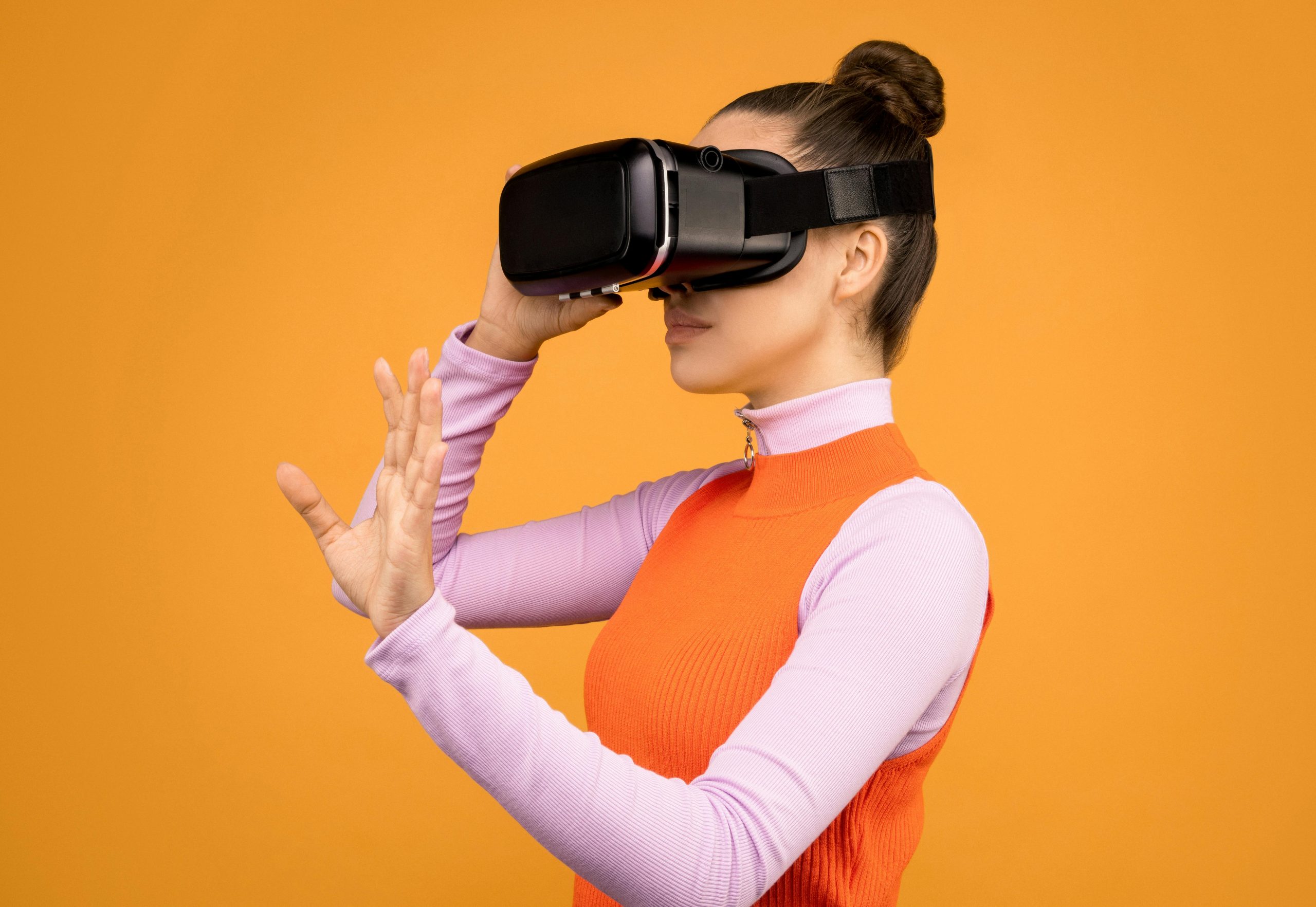
Imagine being able to try on a pair of sunglasses, place a new sofa in your living room, or test-drive a car—all from the comfort of your home. Thanks to augmented reality (AR), these futuristic shopping experiences are now a reality. Augmented reality in e-commerce is revolutionizing the way consumers interact with products online, bridging the gap between physical and digital shopping. By overlaying digital elements onto the real world, AR enhances product visualization, boosts customer confidence, and drives sales. As retailers embrace this cutting-edge technology, the future of online shopping is becoming more immersive, personalized, and engaging than ever before.
What Is Augmented Reality in E-commerce?
Augmented reality is a technology that superimposes digital images, animations, or information onto the real world through a smartphone, tablet, or AR glasses. In e-commerce, AR allows shoppers to visualize products in their own environment or on themselves before making a purchase. Unlike virtual reality (VR), which creates an entirely artificial environment, AR enhances the real world with interactive digital elements. This makes it an ideal tool for online retailers looking to provide a more tactile and engaging shopping experience.
For example, furniture retailers like IKEA use AR to let customers see how a piece of furniture would look in their home before buying. Beauty brands such as Sephora offer virtual try-ons for makeup, while fashion retailers enable shoppers to “try on” clothes virtually. These applications not only improve customer satisfaction but also reduce return rates—a major pain point in e-commerce.
How AR Enhances the Online Shopping Experience
Augmented reality is transforming e-commerce by addressing some of the biggest challenges of online shopping. Here’s how:
1. Improved Product Visualization
One of the biggest drawbacks of online shopping is the inability to see, touch, or try products before purchasing. AR solves this problem by allowing customers to interact with 3D models of products in real-time. Whether it’s checking how a watch looks on their wrist or seeing how a rug fits in their living room, shoppers can make more informed decisions.
2. Reduced Return Rates
Returns are costly for both retailers and consumers. By enabling customers to preview products accurately, AR minimizes the likelihood of dissatisfaction. Studies show that AR can reduce return rates by up to 25%, saving businesses millions in logistics and restocking fees.
3. Increased Engagement and Conversion Rates
Interactive AR experiences keep shoppers engaged longer, increasing the chances of a purchase. Brands using AR report higher conversion rates, as customers are more confident in their buying decisions. For example, Shopify found that products with AR content had a 94% higher conversion rate than those without.
4. Personalized Shopping Experiences
AR allows brands to offer tailored recommendations based on user interactions. For instance, a makeup app might suggest complementary products after a virtual try-on, enhancing cross-selling opportunities.
Real-World Examples of AR in E-commerce
Several leading brands have successfully integrated AR into their e-commerce strategies, setting new standards for online shopping:
- IKEA Place: This app lets users place true-to-scale 3D models of IKEA furniture in their homes, ensuring the perfect fit before purchase.
- Sephora Virtual Artist: Customers can try on thousands of makeup shades virtually, helping them choose the right products without visiting a store.
- Warby Parker: The eyewear brand’s AR feature allows shoppers to try on glasses using their smartphone camera, mimicking an in-store experience.
- Nike Fit: Using AR, Nike scans a user’s feet to recommend the perfect shoe size, reducing sizing-related returns.
These examples demonstrate how AR is not just a gimmick but a powerful tool for enhancing customer satisfaction and driving sales.
The Future of AR in E-commerce
As AR technology continues to evolve, its applications in e-commerce will expand even further. Here are some trends to watch:
1. Social Commerce Integration
Social media platforms like Instagram and Snapchat are already leveraging AR for shopping. Users can try on products through filters and purchase them directly within the app, creating a seamless shopping experience.
2. AI-Powered AR Recommendations
Combining AR with artificial intelligence will enable hyper-personalized shopping experiences. AI can analyze user behavior and preferences to suggest products that align with their tastes.
3. AR-Powered Virtual Stores
Retailers may soon create fully immersive virtual stores where customers can browse and interact with products as if they were in a physical location.
4. Wearable AR Devices
As AR glasses like Apple’s Vision Pro become mainstream, shopping experiences will become even more immersive, allowing hands-free product interactions.
Conclusion
Augmented reality is no longer a futuristic concept—it’s a game-changer for e-commerce. By enhancing product visualization, reducing returns, and increasing engagement, AR is reshaping the way consumers shop online. As technology advances, retailers who embrace AR will gain a competitive edge, offering unparalleled shopping experiences that blend the best of digital and physical retail. The future of e-commerce is here, and it’s augmented.





